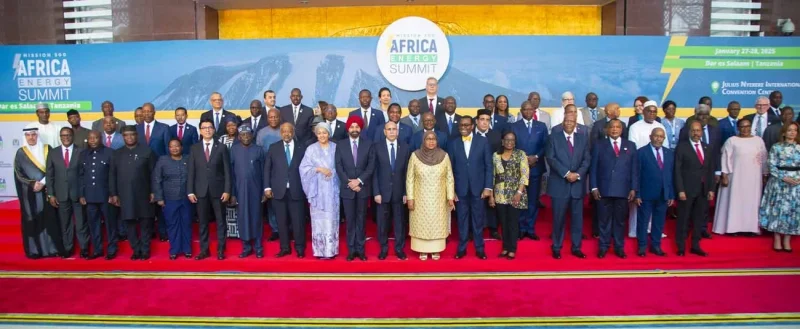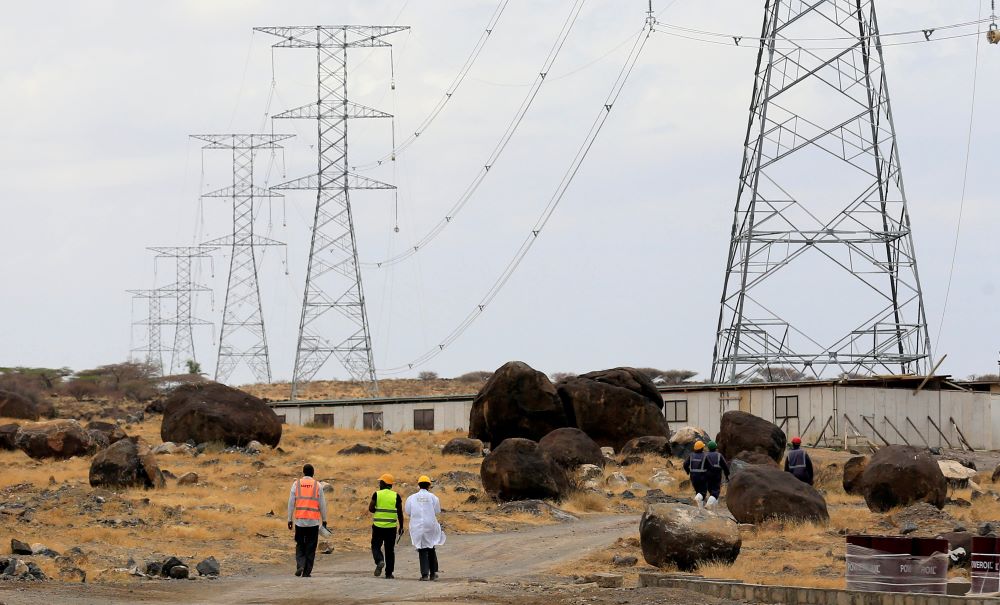The poor state of many networks across Africa is slowing growth in renewable electricity provision, while off-grid solar may be faster and cheaper for rural areas
African leaders at a regional energy summit in Tanzania this week called for more investment in aging grid infrastructure in their countries to tackle widespread power outages that hamper major economies including Nigeria and South Africa, and to expand modern energy access to half of the 600 million people who lack it on the continent.
The conference was organised by Mission 300, an initiative launched in April 2024 by the African Development Bank and the World Bank to provide 300 million energy-poor Africans with electricity by 2030. This will be done mainly by connecting them to national grids or local minigrids powered by renewables such as solar.
The development banks have committed to collectively deliver $40 billion under the initiative – a target that was raised this week to more than $50 billion by contributions from other financial institutions, including the Asian Infrastructure Investment Bank (AIIB) with around $1.5 billion and the Islamic Development Bank Group with $2.65 billion.
To meet the Mission 300 goals, a first batch of 12 countries – Chad, Côte d’Ivoire, Democratic Republic of Congo, Liberia, Madagascar, Malawi, Mauritania, Niger, Nigeria, Senegal, Tanzania and Zambia – presented national energy compacts with detailed targets to scale up electricity access through renewable energy, as well as strategies to boost regional integration and attract private sector investment.
Presenting their plans, African leaders spoke of how outdated infrastructure has limited energy expansion on the continent and held back development in areas like healthcare, education, job creation and digital inclusion.
President Hakainde Hichilema of Zambia said African countries “need energy to develop our economies faster,” adding that “energy is life – as is water”- and energy is essential to extract water for human consumption, agriculture and industry, and keep people healthy.
He pointed to the need for a diversified energy mix coming from different sources including solar, hydro and geothermal, and emphasised that the power they generate must also be transmitted. “We need to take it where it’s needed,” he said.
Other countries echoed a similar concern in their energy compacts. Nigeria’s plan, for instance, stated that “the ability of the transmission system to evacuate available generation capacity is inadequate due to aging and poorly maintained infrastructure”. It called for “targeted concessionary lending to qualifying distribution companies (DISCOs) to strengthen distribution infrastructure”.
Tanzania also mentioned in its compact that the country’s electricity connections are faced with the challenge of “poor reliability and quality of service, caused by a deteriorating network with overloaded transformers [and] distribution feeders”. It called for improvements in the quality of the electricity service that “require investments in grid stabilization, network rehabilitation, reinforcement, and upgrades”.

African leaders at the Mission 300 energy summit (Photo: AfDB)
Makhtar Diop, managing director of the International Finance Corporation (IFC), noted that “a lot of the power outages in Africa are not linked often to production – they are often linked to distribution because the [electricity] network is not robust enough” and called for investments in distribution.
The companies managing distribution require capital injections because most are “under-capitalised and not in a good finance situation and therefore not able to invest in operational maintenance”, he added.
Meanwhile, the progress of some countries like Uganda shows that grid improvement and extension to improve distribution is achievable. With World Bank support, the country extended its grid and installed solar energy in health centres and water supply schemes, directly benefiting almost 8.8 million people in rural areas between 2016 and 2023. It has now embarked on another such project, involving the private sector.
Off-grid ‘cheaper and faster’
Off-grid electrification is also seen as key to the Mission 300 objective – and the energy compacts presented in Dar es Salaam reflected how, in the face of delays to grid extensions, distributed renewable energy (DRE) offers a faster means to electrify under-served communities.
Half of the Mission 300 goal is due to be achieved by off-grid connections. World Bank President Ajay Banga said geo-spatial mapping was being used within countries to decide which areas can be connected to the grid and which require DRE, including solar and battery storage systems that are “cheaper and faster” to install.
Coal-reliant South African provinces falling behind on just transition
Woochong Um, CEO of the Global Energy Alliance for People and Plant (GEAPP), said thi
Read More

